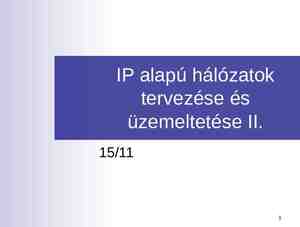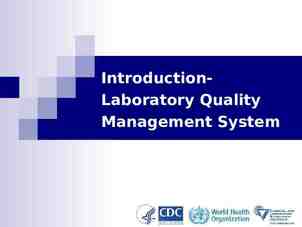How is a PCB Made ? What determines impedance ? polarinstruments
23 Slides347.00 KB
How is a PCB Made ? What determines impedance ? www.polarinstruments.com
Manufacturing Processes Manufacturing Processes for a Multi-layer PCB The following presentation covers the main processes during the production of a multi-layer PCB. Tracks under solder mask Via hole The diagrams which follow represent a section through a 6 layer PCB, as indicated in red. SMD Pad Section through PCB 2 www.polarinstruments.com
Manufacturing Processes Typical Layer Construction - 6 Layer PCB Copper Layer 1 (Outer) Laminate FOIL PRE-PREG Layer 2 (Inner) Layer 3 (Inner) INNER LAYER PRE-PREG Layer 4 (Inner) Layer 5 (Inner) INNER LAYER PRE-PREG Layer 6 (Outer) FOIL Impedance Considerations Layer build / stackup is one of the most important aspects of controlled impedance Many combinations of material thickness can be used. PCB Fabricators manufacturing techniques vary 3 www.polarinstruments.com
Manufacturing Processes Drilling of Bonded Panel Copper Laminate Drilled Hole Layer 1 Layer 2 Layer 3 Layer 4 Layer 5 Impedance Considerations Press temperature and pressure have an effect on the flatness and hence impedance. This should be checked prior to drilling Drilling itself does not effect impedance Layer 6 4 www.polarinstruments.com
Manufacturing Processes Electroless Copper Process Addition of Copper to all Exposed Surfaces Copper Drilled Hole Layer 1 Layer 2 Layer 3 Layer 4 Layer 5 Impedance Considerations Electroless copper effects copper thickness on outer layers (T) Sometimes other solutions are used containing carbon etc Layer 6 5 www.polarinstruments.com
Manufacturing Processes Laminating and Imaging of External Layers UV sensitive film is laminated over top and bottom surfaces of PCB It is then exposed and developed, leaving an exposed image of the PCB pattern Layer 1 Impedance Considerations Layer 2 Does not effect impedance Layer 3 Layer 4 Layer 5 Layer 6 Copper 6 www.polarinstruments.com
Manufacturing Processes Electro-plating Process 1 Additional Copper to all Exposed Surfaces Laminated Film Plate Additional Copper Layer 1 Layer 2 Layer 3 Layer 4 Layer 5 Layer 6 7 Impedance Considerations Electro-plating increases the copper thickness on outer layers (T) This will always be variations in the amount of copper added. This finished copper thickness should be used in structure calculations www.polarinstruments.com
Manufacturing Processes Electro-plating Process 2 Add Tin over Exposed Copper Areas Laminated Film Additional Copper Tin Plating Layer 1 Layer 2 Impedance Considerations Does not effect impedance Layer 3 Layer 4 Layer 5 Layer 6 8 www.polarinstruments.com
Manufacturing Processes Electro-plating Process 3 Remove Laminated Film Laminated Film Removed Tin Plating Layer 1 Layer 2 Impedance Considerations Does not effect impedance Layer 3 Layer 4 Layer 5 Layer 6 9 www.polarinstruments.com
Manufacturing Processes Etch Process - Remove Exposed Copper Copper Removed Tin Plating Layer 1 Layer 2 Layer 3 Layer 4 Layer 5 Layer 6 10 Impedance Considerations The etch process produces an ‘etch back’ or undercut of the tracks. This can be specified by the W / W1 parameters This means that tracks will end up approximately 0,025 mm (0.001”) thinner than the original design. www.polarinstruments.com
Manufacturing Processes Tin Strip - Remove Tin Plating Tin Plating Removed Layer 1 Layer 2 Layer 3 Layer 4 Impedance Considerations The Removal of Tin will slightly reduce the copper thickness (T) on the outer layers Layer 5 Layer 6 11 www.polarinstruments.com
Manufacturing Processes PCB is now complete except for surface finishes and panel routing Tracks Via Hole SMD Pad Layer 1 Layer 6 Tracks 12 www.polarinstruments.com
Manufacturing Processes Solder Mask Application - Curtain Coated Method Apply Liquid Photo-imageable Resist, then Dry Layer 1 Impedance Considerations Layer 6 13 Some PCB Fabricators chose to check the impedance before the solder mask is added Structures can be checked in Normal and Coated mode Thickness of solder mask should be specified using H1 www.polarinstruments.com
Manufacturing Processes Solder Mask Application Image, Develop and Cure UV Image, Develop and Cure Layer 1 Impedance Considerations Does not effect impedance Layer 6 14 www.polarinstruments.com
Manufacturing Processes Surface Finish Process Apply Solder to Exposed Copper Areas Layer 1 Impedance Considerations Layer 6 15 Surface Finish (Tin / Lead / Gold / Silver) is usually only added to pads If board has no solder mask the thickness of finish should be added to T. www.polarinstruments.com
Manufacturing Processes Component Notation SCL2 9624 R34 R34 Impedance Considerations Does not effect impedance IC3 IC3 16 www.polarinstruments.com
Manufacturing Processes Routing (includes second stage drilling) Impedance Considerations Controlled Impedance coupons are routed from the panel Good controls are necessary to ensure that coupons can be matched to manufacturing panels 17 www.polarinstruments.com
Manufacturing Processes Process finished PCB and coupon for testing Impedance Considerations Controlled Impedance coupons are routed from the panel Controls are necessary to ensure that coupons can be matched to manufacturing panels this should be performed on trial panels prior to production ramp up. 18 www.polarinstruments.com
Manufacturing Processes Why as a designer do you need to discuss your design with your PCB fabricator? PCB manufacture is a process, it uses materials which are not “Ideal” FR4 for example is a glass resin mix made of two substances with differing electrical properties. Impedance Considerations Glass Er 6 Resin Er 3 (FR4) Resin Er 3 (High performance laminates) PCB Manufacturers need to make small adjustments to designs to maximise yields 19 www.polarinstruments.com
Manufacturing Processes Why as a designer do you need to discuss your design with your PCB fabricator? Process varies from one fabricator to another. Press pressures temperatures may vary Impedance Considerations Supplier variations Pre preg and Core may vary from one Supplier to another. 20 www.polarinstruments.com
Manufacturing Processes Process finished PCB and coupon for testing Impedance Considerations Controlled Impedance coupons are routed from the panel Controls are necessary to ensure that coupons can be matched to manufacturing panels this should be performed on trial panels prior to production ramp up. 21 www.polarinstruments.com
Design & test tools for controlled impedance & Signal integrity PCB Faultfinding systems & software www.polarinstruments.com Your contacts at Polar: USA: Richard Smith (800) 328 0817 UK / Europe: Neil Chamberlain 44 23 9226 9113 Asia / Pacific: Amit Bhardwaj 65 6873 7470 2003 Polar Instruments
For more information please visit: www.polarinstruments.com Your contacts at Polar: USA: Richard Smith (800) 328 0817 UK / Europe: Neil Chamberlain 44 23 9226 9113 Asia / Pacific: Amit Bhardwaj 65 6873 7470 2003 Polar Instruments




























